Cell Analysis Market Size and Forecast 2025 to 2034
The global cell analysis market size is projected to be worth around USD 84.01 billion by 2034 from USD 32.95 billion in 2024, at a CAGR of 9.81% from 2025 to 2034. The growing prevalence of rare diseases around the world has driven the growth of the cell analysis market. Also, the rising number of cloud-based cell analysis services boosts industrial growth. Moreover, the rise in the number of hospitals and clinical settings contributes positively to the market.
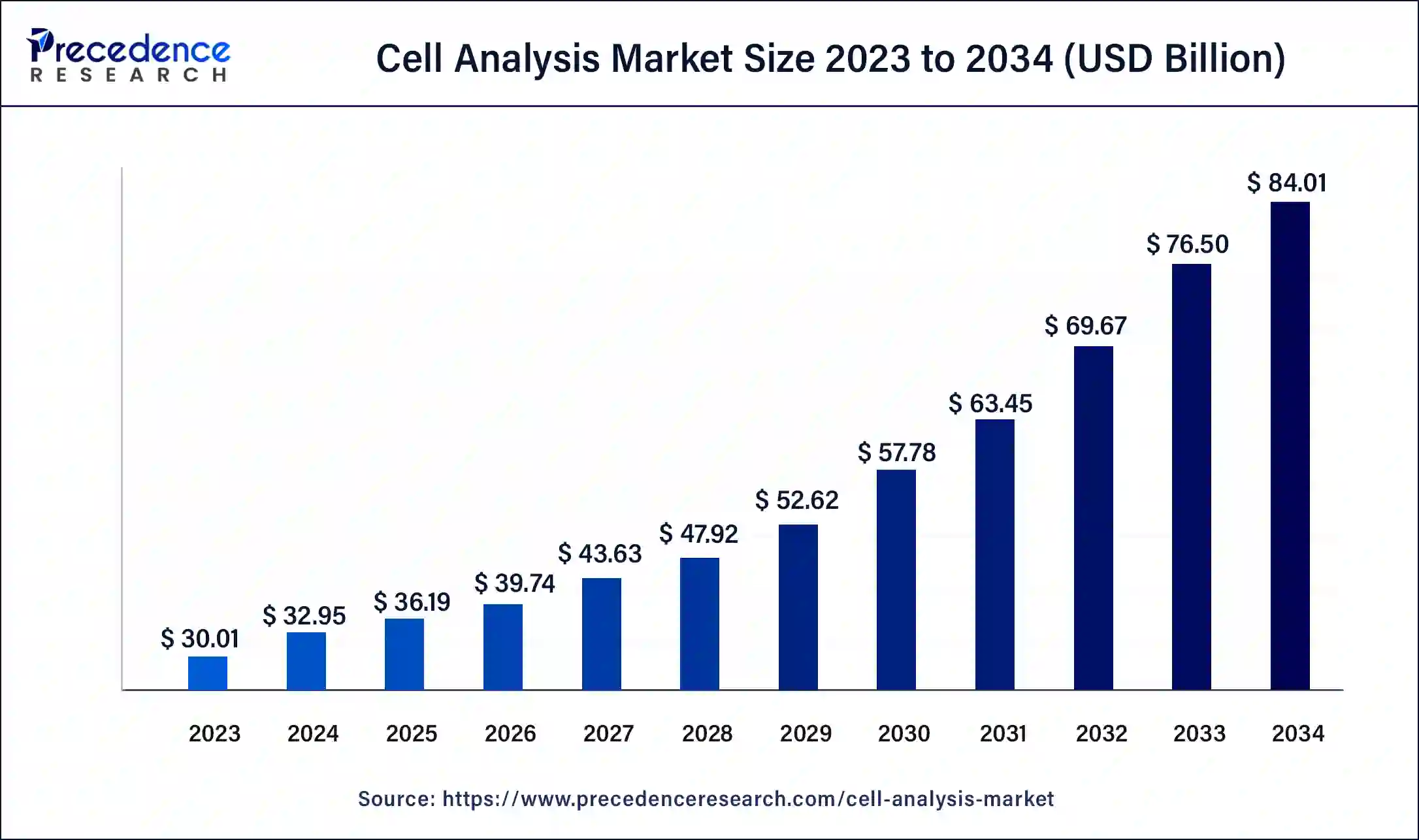
Cell Analysis Market Key Takeaways
- The global cell analysis market was valued at USD 32.95 billion in 2024.
- It is projected to reach USD 84.01 billion by 2034.
- The market is expected to grow at a CAGR of 9.81% from 2025 to 2034.
- North America led the cell analysis market with the highest market share of 42% in 2024.
- Asia Pacific is expected to grow at a notable CAGR of 10.90% during the forecast period.
- By product & service, the reagents & consumables segment contributed more than 49% of market share in 2024.
- By product & service, the service segment is anticipated to grow at the fastest growth rate during the forecast period.
- By technique, the flow cytometry segment held a dominant share of the market in 2024.
- By technique, the high-content screening segment is likely to grow with the highest CAGR of 11.22% during the forecast period.
- By process, the cell identification segment dominated the cell analysis market in 2024.
- By process, the single-cell analysis segment is assumed to grow with the fastest growth rate during the forecast period.
- By end-use, the pharmaceutical and biotechnology companies segment generated more than 41% of market share in 2024.
- By end-use, the hospitals and clinical testing laboratories segment is expected to grow with the highest CAGR during the forecast period.
U.S. Cell Analysis Market Size and Growth 2025 to 2034
The U.S. cell analysis market size was exhibited at USD 10.38 billion in 2024 and is projected to be worth around USD 26.96 billion by 2034, poised to grow at a CAGR of 9.99% from 2025 to 2034.
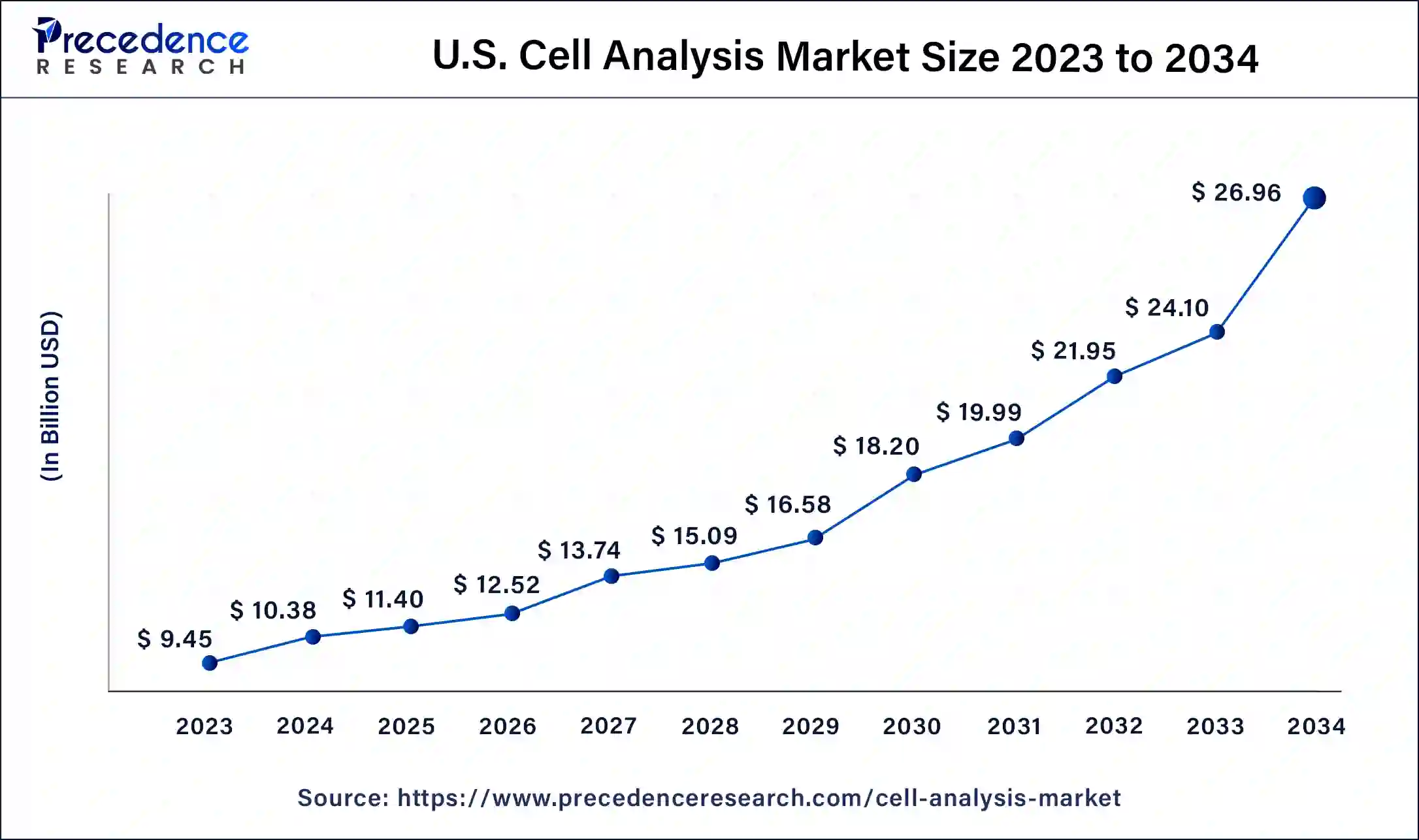
North America held the largest share of the cell analysis market in 2024. The rise in the number of research institutes associated with cell analysis processes, along with several government initiatives to develop the healthcare and biomanufacturing infrastructure in the U.S. and Canada, has increased the demand for cell analysis tools in this region. The prevalence of various types of cancers, such as breast cancer, prostate cancer, lung cancer, and some others, has increased significantly in this region, which in turn increases the demand for cell analysis tools for developing advanced therapeutics to cure these diseases. North America comprises several local companies of cell analysis such as Thermo Fisher Scientific, Inc., Danaher, Agilent Technologies, Inc., 10x Genomics, Inc., and some others are continuously developing superior quality cell analysis tools for numerous end-users in this region, which in turn is expected to foster the development of the cell analysis market.
- In July 2024, the Canadian government launched STEMCELL Technologies. Through this launch, the government aimed to invest around US$ 22.5 million in developing a biomanufacturing facility in the area of British Columbia.
- According to the National Breast Cancer Foundation of the U.S., about one in every eight women in the U.S. experiences breast cancer in her entire lifetime. It also made an estimation stating that around 310,720 women and 2,800 men in this country are likely to be suffering from invasive breast cancer in 2024.
- In February 2024, 10x Genomics, Inc. launched GEM-X. GEM-X is a single-cell analysis solution that provides improved assay robustness, enhanced data quality, cost-effectiveness, increased sensitivity, and some others.
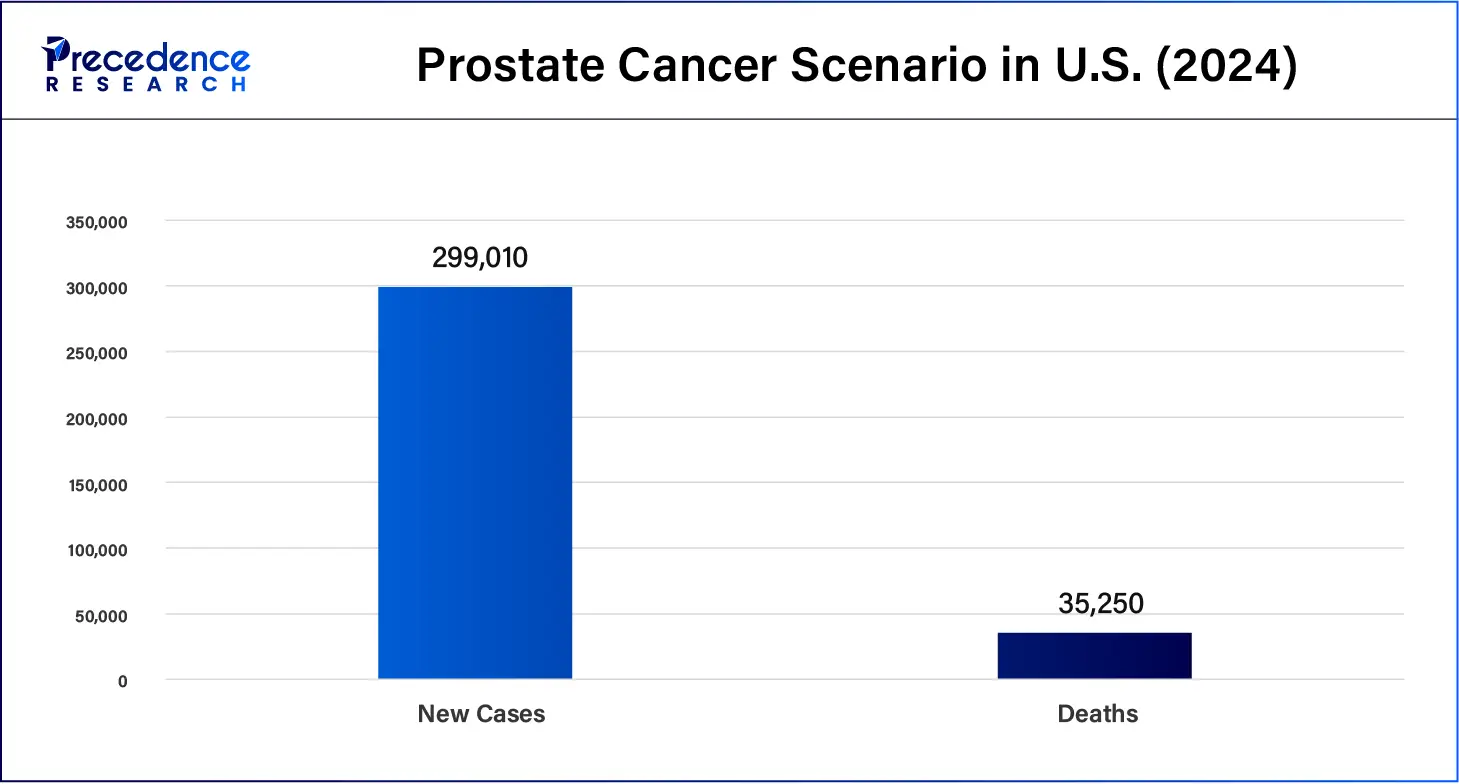
Asia Pacific is anticipated to grow at the fastest growth rate during the forecast period. The rising development in the biotechnology sector in countries such as China, India, Japan, South Korea, Taiwan, Israel, Australia, and others has contributed to the increasing applications of cell analysis tools. The cell analysis market in Japan is highly developed due to the presence of numerous biotechnology companies along with various technological advancements associated with cell analysis. Also, the rising prevalence of cardiovascular diseases in the Asia Pacific region has increased the application of cell analysis for developing novel therapies.
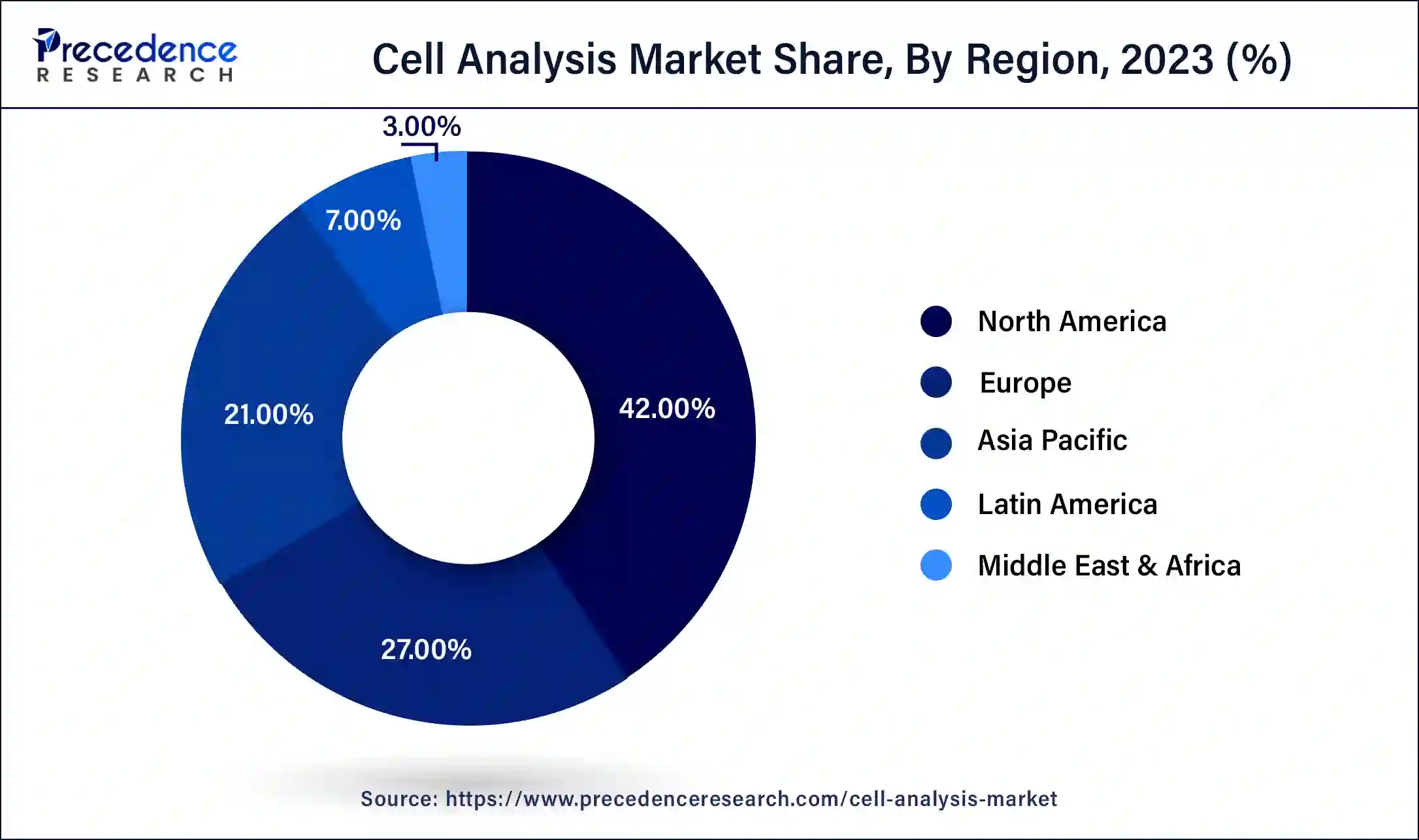
This region consists of various market players in cell analysis, including Olympus Corporation, Nikon Corporation, Shanghai Ruiyu Biotechnology Co. Ltd, BGI Group, Takara Bio, and some others that are constantly engaged in developing cell analysis tools and providing services to numerous end-users. Also, these companies are adopting several strategies, such as partnerships, acquisitions, collaborations, launches, and business expansions, that are driving the growth of the cell analysis market in this region.
- According to the BIOHK, the Asia biotechnology market size is around US$ 48.75 billion in 2024 and is expected to reach US$ 78.69 billion by 2029.
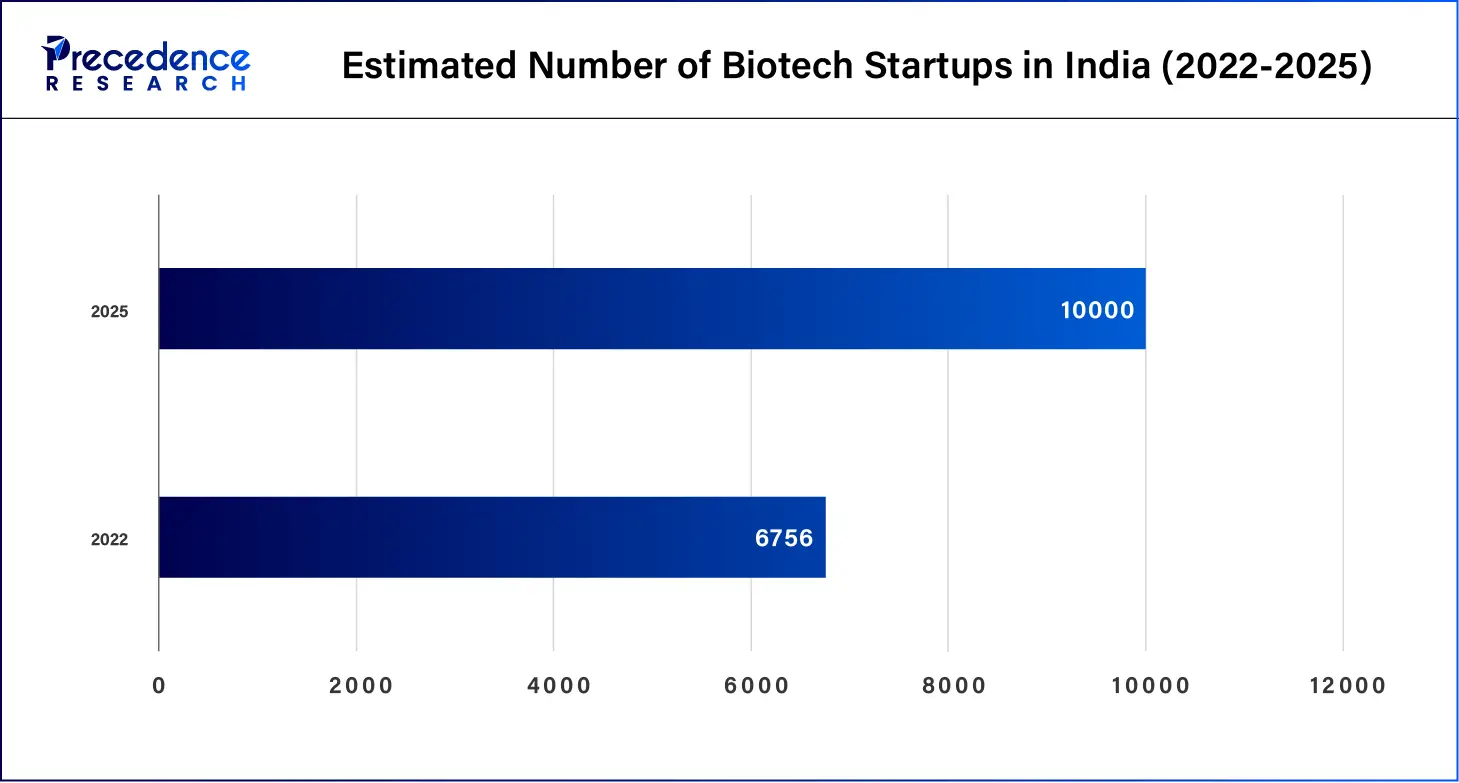
The Asia Pacific Cohort Studies Collaboration (APCSC) estimated that there will be a 60% increase in CVD patients in Asia countries in 2023-24. It further made an estimation mentioning the total number of patients with hypertension in China and India is anticipated to increase and reach around 500 million in 2025.
- In April 2024, Takara Bio launched the Shasta Single-Cell System. Shasta is a single-cell analysis platform that helps in discovering biomarkers for cancer treatment.
Market Overview
The cell analysis market is an important industry in the biopharmaceutical sector. This industry deals with distributing cell analysis techniques and services to different end-users. There are various products and services in this industry that include reagents & consumables, instruments, accessories, software, and services. This industry comprises several techniques, such as flow cytometry, cell microarrays, microscopy, PCR, and others.
The processes used for cell analysis include cell identification, cell signaling pathways, cell interaction, cell structure study, single-cell analysis, and others. The end-users of this market include pharmaceutical & biotechnology companies, academic & research institutes, hospitals & clinical testing laboratories, and others. This industry is anticipated to grow significantly with the development of the biopharma industry.
- According to the annual report of Agilent published in 2023, the net revenue of the life sciences and applied markets segment was US$ 3856 million, which is mainly driven by the sales of cell analysis tools.
Cell Analysis Market Growth Factors
- Rising application of cell-based assays for drug discovery.
- Prevalence of chronic diseases among the people.
- Growing advancements in cell analysis methodology.
- The use of a cell analysis process for monitoring treatment progress.
- The advancements in the biotechnology sector across the world.
- Government initiatives for developing the healthcare sector.
- Increased use of personalized medicine for treating rare diseases.
- Rising trend of point of care (POC) testing.
- Technological developments in the field of cell analysis.
- Increase in the number of research institutions dealing in cell analysis.
How is AI changing the Cell Analysis Market?
The AI industry is developing rapidly with the advancements in modern science and technologies. The advancements in AI technology are crucial for the development of numerous industries. Nowadays, researchers have started using AI to develop novel therapies and cell analysis technology. AI plays an integral role in cell analysis by enhancing the capability of cell monitoring, cell movement, understanding cell morphology, and others. Thus, the integration of AI in the cell analysis market is changing the landscape of the market in a positive way.
- In May 2023, Deepcell launched the REM-I Platform. REM-I Platform is an AI-powered platform that helps in single cell analysis for enhancing cell biology discovery and cell sorting.
Top 10 Biotechnology Companies
- Novo Nordisk
- Acuitas Therapeutics
- Amgen
- Ancilia Biosciences
- Axial Biotherapeutics
- BioMarin Pharmaceutical
- Pfizer
- BridgeBio
- Formation Bio
- Gilead Sciences
Market Scope
| Report Coverage | Details |
| Market Size by 2034 | USD 84.01 Billion |
| Market Size in 2025 | USD 36.19 Billion |
| Market Size in 2024 | USD 32.95 Billion |
| Market Growth Rate from 2025 to 2034 | CAGR of 9.81% |
| Largest Market | North America |
| Base Year | 2024 |
| Forecast Period | 2025 to 2034 |
| Segments Covered | Product & Service, Technique, Process, End-Use, and Regions |
| Regions Covered | North America, Europe, Asia-Pacific, Latin America, and Middle East & Africa |
Market Dynamics
Driver
Increased prevalence of disease around the world
The cases of various chronic and acute diseases are rapidly increasing around the world. The prevalence of chronic diseases such as cancer, CVD, and some others is rising due to unhealthy food habits, genetic reasons, obesity, and others. Also, the prevalence of acute diseases such as pneumonia, asthma, appendicitis, and others has also grown significantly in various parts of the world. With the rising prevalence of diseases, the application of cell analysis increases for manufacturing therapies for treatment.
- According to a report published by the Asthma and Allergy Foundation of America in April 2024, more than 27 million people in the U.S. suffer from asthma.
- According to research by the Centers for Disease Control and Prevention (CDC), the estimated number of cardiovascular deaths was 702,880 in 2022.
- According to a survey report published by Cancer.net, around 14% of the total lung cancer cases were small cell lung cancer (SCLC) in 2023. It also made an estimation stating that around 238,440 adults (120,790 women and 117,550 men) in the U.S. are likely to be suffering from lung cancer in the same year.
- According to a study by the Canadian Cancer Statistics 2023, around 1 in every 4 Canadian population will die from cancer in 2023. It is also estimated that the prevalence of cancer cases in men will be higher than female in Canada.
Restraint
Complexity and high cost
The cell analysis industry faces different problems at present time. Some of the cell analysis platforms are very complex to operate and require experienced professionals for smooth processing. Also, the cost of various products required in cell analysis platforms is increasing rapidly. Both the above-mentioned factors are restraining the growth of the cell analysis market during the forecast period.
Opportunity
Research activities associated with SWAT cells to shape the future
The cell analysis market is developing rapidly due to scientific advancements in the field of medical sciences. Nowadays, researchers have increased their emphasis on SWAT cells to develop several novel therapeutics. The SWAT cells consist of various benefits, including flexibility, multipotency, adiponectin secretion, hormone response, and some others. Thus, the rising emphasis on research related to SWAT cells is projected to change the landscape of the industry in the near future.
- In July 2023, the scientists of the University of Copenhagen and Rigshospitalet discovered a new type of cell named the ‘SWAT Cell.' The scientists also concluded that SWAT cells are highly flexible and can turn into various types of cells, such as progenitor cells, fat cells, and others.
Product and Service Insights
The reagents & consumables segment held the dominant share of the cell analysis market in 2024. The demand for reagents and consumables has increased with the rise in the number of scientific laboratories around the world. Also, the growing use of cellular kits and reagents for cellular imaging applications such as fluorescence microscopy, HCS, IHC, ISH, LCM, and others has contributed positively to the market. Moreover, the advancements in cell analysis reagents such as cell dissociation, cell counting, and viability assays will help the industry in a positive way.
- In September 2023, Bruker Cellular Analysis launched the SpotLight Human Lambda reagent. This reagent finds several applications in cell analysis for manufacturing monoclonal antibodies.
The service segment is anticipated to grow with the highest CAGR during the forecast period. The rising application of cell analysis services in research centers and laboratories is prominent for industrial growth. Also, the demand for cell analysis services has increased from the biopharmaceutical sector for discovering novel cell-based therapeutics. Moreover, the increase in the number of CROs around the world that are providing a variety of cell analysis services at affordable prices is integral to the development of the industry.
- In June 2022, Nygen Analytics launched ScarfWeb. ScarfWeb is a cloud-based cell analysis service that helps researchers analyze different types of cells that are derived from any biological tissue.
Technique Insights
The flow cytometry segment dominated the cell analysis market in 2024. The demand for flow cytometry has increased for large sample analysis and cell identification. Also, the application of flow cytometry in analyzing phenotypic sequences, along with its several benefits, such as automation, speed, and objectivity, has contributed to industrial growth.
- In September 2022, PerkinElmer launched Cellaca PLX. Cellaca PLX is an image cytometry system that helps in analyzing cell quality, identity, and quantity.
The high-content screening segment is expected to grow with the highest CAGR during the forecast period. The advancements in technologies such as AI and Machine learning that are related to medical fields are integral for high content screening. Also, the growing application of high-content screening in drug discovery and biological research has increased the interest of pharmaceutical companies. Moreover, the rising development of high-content screening systems for identifying microsubstances such as peptides, small molecules, RNAi, and others is crucial for the biotechnology industry.
- In December 2023, Piramal Pharma announced the inauguration of a high-content screening facility in Ahmedabad, India. This new facility has been opened to enhance the drug discovery processes and in-vitro technology.
Process Insights
The cell identification segment led the cell analysis market in 2024. The rising application of the cell identification process in the biopharma industry for drug discovery and the manufacturing of novel therapies is prominent for market growth. Also, the growing usage of cell identification for diagnosing cancer, immunological disorders, stem cells, and others has gained the utmost attention from the healthcare sector.
- In July 2024, Avantor, Inc. launched T. Baker Cell Lysis Solution and J.T. Baker Endonuclease. These products are launched to identify cells of various types existing in different organisms.
The single-cell analysis segment is assumed to grow with the highest CAGR during the forecast period. The demand for the single-cell analysis process has increased due to its capacity to interrogate heterogeneous cells. Also, the rising application of single-cell analysis processes in biotech research institutes & pharma industry for drug development and bioinformatic analysis boosts the market growth. Moreover, the use of single cells in detecting cancerous tissues in humans contributes to industrial growth.
- In June 2024, Bio-Rad Laboratories, Inc. launched ddSEQTM Single-Cell 3' RNA-Seq Kit along with complementary Omnition v1.1 analysis software. Through this launch, the company aims to strengthen its single-cell analysis portfolio to support a wide range of research fields, including immunology, neurology, oncology, and stem cell biology.
End-Use Insights
The pharmaceutical and biotechnology companies segment held the largest share of the cell analysis market in 2024. The rising developments in the pharmaceutical industry around the world, along with several government initiatives for strengthening the biotech sector, are crucial for market growth. Also, the growing application of cell analysis in the pharmaceutical industry for drug discovery and manufacturing novel therapeutics is an important driving factor of this market. Moreover, the upsurge in demand for cell analysis in thebiotechnology sector to perform clinical applications and identify phenotypes of different organisms has propelled industrial development.
- In June 2023, Agilent launched xCELLigence RTCA Software Pro Version 2.8. This software helps in analyzing different cells for various applications in the biopharmaceutical and pharmaceutical industries.
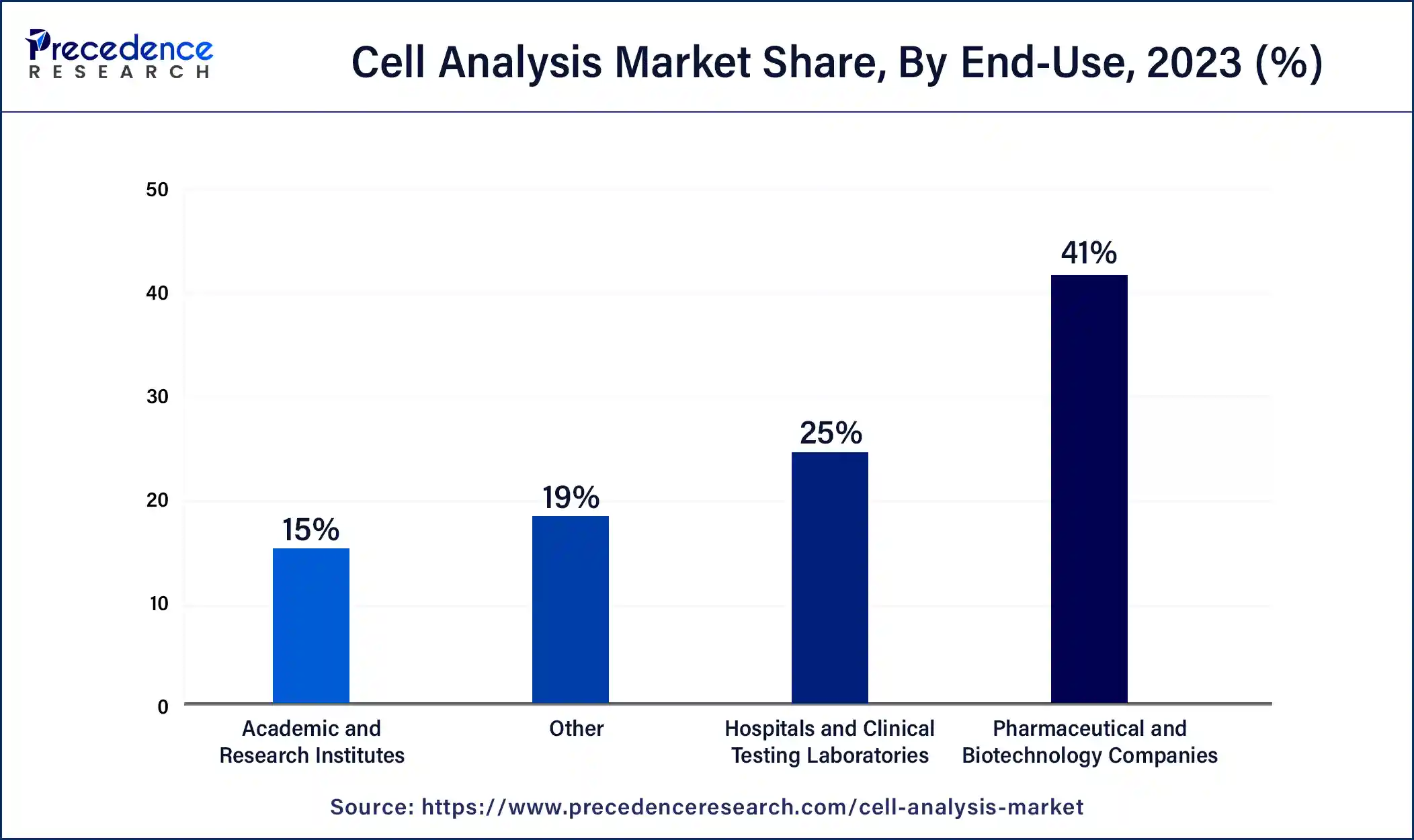
The hospitals and clinical testing laboratories segment is likely to grow with the highest CAGR during the forecast period. The rising developments in hospital infrastructure across the world due to government funding and private investment are integral for cell analysis market growth. Also, the growing application of cell analysis in clinical testing and hospitals for diagnosing chronic diseases has contributed to the growth of the market. Moreover, the market benefits from the advancements in technologies associated with cell analysis, along with the increasing use of cell analysis systems and services in hospitals and clinics.
- In July 2024, Biostate AI launched total RNA sequencing and Copilot for RNAseq data analysis. These services are launched with the aim of analyzing different cells in hospitals and clinical settings.
Cell Analysis Market Companies
- Thermo Fisher Scientific, Inc.
- Danaher
- Merck KGaA
- Agilent Technologies, Inc.
- BD
- Bio-Rad Laboratories, Inc.
- Miltenyl Biotech
- Revvity
- New England Biolabs
- Avantor, Inc.
Recent Developments
- In July 2024, NanoCellect Biomedical launched VERLO Image-Guided Cell Sorter. This device is launched with the aim of changing the demography of single-cell visualization along with cell sorting and cytometry analysis.
- In June 2024, Cytomos launched Celledonia. Celledonia was launched to provide unbiased and rapid cell analysis and reduce the costs and time associated with cell transfer.
- In June 2024, Sphere Fluidics unveiled Cyto-CellectPLUS. Cyto-CellectPLUS is a cell analysis platform that helps in measuring antibody production and enhances the cell identification procedure.
- In May 2024, Parse Biosciences announced the launch of Trailmaker. Trailmaker is a cloud-based platform that finds applications in single-cell analysis.
- In March 2024, Serum Detect launched Novel T-Cell Analysis. This cell analysis method will help in detecting cancers of early stages.
- In February 2024, Cell Microsystems announced a partnership with OMNI Life Science. This partnership is aimed at developing a novel cell analysis solution in North America.
- In December 2023, CS Genetics announced the commercialization of a single-cell analysis technology. This new single-cell analysis platform is a free instrument that finds applications in RNA sequencing.
- In June 2023, Singleron launched Singleron Python Junior and Matrix Neo. These two instruments have applications in single-cell analysis for numerous operations.
Segments Covered in the Report
By Product & Service
- Reagents and Consumables
- Instruments
- Accessories
- Software
- Service
By Technique
- Flow Cytometry
- Cell Microarrays
- Microscopy
- PCR
- Spectrophotometry
- High Content-Screening
- Other Techniques
By Process
- Cell Identification
- Cell Proliferation
- Cell Signaling Pathways
- Cell Interaction
- Cell Counting
- Cell Viability
- Cell Structure Study
- Single-cell Analysis
- Others
By End-Use
- Pharmaceutical and Biotechnology Companies
- Academic and Research Institutes
- Hospitals and Clinical Testing Laboratories
- Other
By Geography
- North America
- Asia Pacific
- Europe
- Latin America
- Middle East & Africa
For inquiries regarding discounts, bulk purchases, or customization requests, please contact us at sales@precedenceresearch.com
Frequently Asked Questions
Ask For Sample
No cookie-cutter, only authentic analysis – take the 1st step to become a Precedence Research client
 sales@precedenceresearch.com
sales@precedenceresearch.com
 +1 804-441-9344
+1 804-441-9344